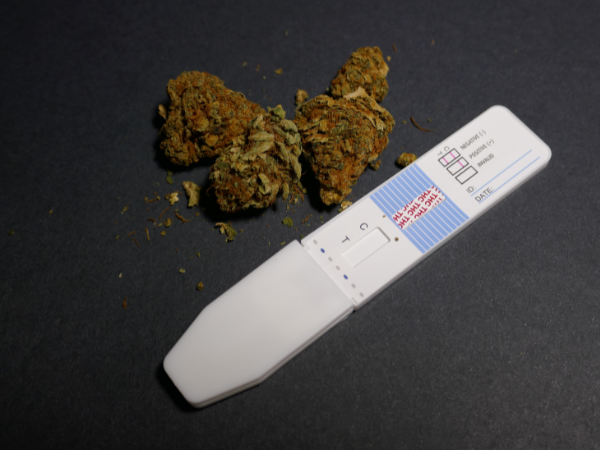These days, here at Drug Testing Kits UK, we see that employers are becoming more and more concerned about alcohol abuse in the workplace. This is due to the very serious risks and consequences posed by members of staff who have no qualms about abusing alcohol; employees who do not face up to the potential risks that they create not just to themselves, but to their co-workers, and in some cases, the general public. Moreover, they have zero concern for their employer's company or organisation's reputation, or the outcome of a serious accident - something which could potentially result in loss of business, bankruptcy, and huge legal bills and compensation claims amounting to hundreds of thousands of pounds
Research shows that anyone who abuses alcohol can cause disruption in the workplace (both in terms of productivity, and working in a team, or department, etc.). And in addition to this, the professional advisors at Drug Testing Kits UK - a nationwide leader in drug and alcohol workplace testing, are very mindful of the fact that someone who is under the influence of alcohol (even when their symptoms are quite mild), can create a very negative atmosphere. - They generate a wave of instability and disharmony which upsets fellow employees, some of whom lose their concentration, and as a result, are less productive.
Alcohol's Negative Effects
"Alcohol is a drug that affects the central nervous system. It belongs in a class with barbiturates, minor tranquillisers, and general anaesthetics, and it is commonly classified as a depressant. The physical signs of excited intoxication are slurred speech, unsteady gait, disturbed sensory perceptions & an inability to make fine motor movements" [1]

So How Are Alcohol Levels Measured?
As concentrations of brain alcohol are hard to measure directly, the impact of alcohol on the brain is measured indirectly. This is done by recording people's mental and physical impairments that normally develop at different levels of BAC (blood alcohol concentration). Of note to employers:
"Inefficiency in performing some tasks may begin at blood alcohol concentrations as low as 0.03%. The impairments at these concentrations may not be visibly displayed by all employees, but workplace alcohol tests show that alertness, visual acuity, & capacity to distinguish between sensory signals, are all diminished. Furthermore, reflex responses & the time of reaction to a signal, as well as neuromuscular functions, are slowed" [1]. To that end, all the aforementioned symptoms, should be of concern to companies, organisations & institutions
Important Measurements
As our Drug Testing Kits UK's professional team and Health Science Advisor, frequently advise the countless companies, organisations and institutions that we supply with British-approved workplace drug & alcohol testing kits: most people who consume alcohol, start to display measurable impairment at a blood alcohol concentration (BAC), of just over 0.05%. - This is a measurement which can impede an employee's productivity levels, and make them a liability in terms of potential accidents. Moreover, the majority of Westernised nations render driving a vehicle at BAC levels between 0.05 to 0.08%, illegal [1]. Of note, all all kinds of unwelcome issues can arise for employers, when employees who are tasked with driving as part of their job, are involved in an accident, or pulled over by traffic police.
"Most people exhibit some degree of functional sedation & motor incapacitation at a BAC of 0.10%, & most people are considered intoxicated at 0.15%" [1]
Did You Know?
To a chemist, the word "alcohol," refers to an organic compound which contains an OH group, but generally speaking, "alcohol" means one specific compound: ethanol. To that end, it is ethanol that people consume when they have a glass of beer or wine etc. Moreover, when blood alcohol content is measured in an on-site alcohol test, it is actually the employee's blood ethanol content that is being measured [2].
The Low-Down on Cutting-Edge Workplace Alcohol Testing
Drug Testing Kit UK's 7 Panel Saliva Multi-Drug & Alcohol Test
This British and Southern Ireland CE approved, state-of-the-art, highly accurate best-selling, super simple to use, 7 Panel Oral Fluid (Saliva) Multi Drug & Alcohol Test Kit, is ideal for testing both commonly used drugs and alcohol in the workplace, all in one go. It is massively popular with companies, organisations, and educational and medical institutions, due to its premium quality, cutting-edge technology, and rapid results which take a matter of minutes. And very importantly, these medically approved multiple-drug and alcohol tests, are available at a very low bulk price, with free delivery and same day dispatch. Moreover, any responsible member of staff can administer the 7 Panel Oral Multi Drug & Alcohol Test, thereby saving companies and organisations a fortune in having to regularly pay out a daily fee for a medic to travel out to the site to administer the tests.
Breathalysers
Most people have heard of a breathalyser. "A breathalyser contains an anode (negatively charged electrode), and a cathode (positively charged electrode). When someone blows into a breathalyser:
-
The ethanol in their breath reacts with water from the air; and
-
The negatively charged electrode (anode) in the breathalyser, is oxidized to form acetic acid (like in vinegar)
-
At the same time, the positively charged electrode (cathode) in the breathalyser, and oxygen from the atmosphere, is reduced to form water" [2].
So in a nutshell, these two coupled reactions generate an electrical current between the negative and positive electrodes , which is proportional to the quantity of ethanol present in the subject's breath. To that end, breathalysers estimate the alcohol content present in the subject's body, in accordance with the ethanol in their breath.
When Could a Breathalyser Fail to to Give a Correct BAC Reading?
There are a only few situations in which a breathalyser may fail to measure BAC accurately. Notably, employees with higher-than-normal levels of acetone in their breath may have it detected as ethanol. This could include diabetics, those on fasting diets, or those adhering to a ketogenic diet" [2]. This means that prior to testing employees for being under the influence of alcohol, any member of staff who is diabetic, must inform the alcohol test administer (who is usually a dedicated member of staff), and then if necessary, provide medical proof to the HR department.
References
[1]. Keller, Mark and Vaillant, George E. (2023). "Alcohol Consumption". Encyclopedia Britannica.
https://www.britannica.com/topic/alcohol-consumption
[2]. McVean, A. (2018). "From Bottle to Blood to Breath: How Breathalysers Work."



 03333 704 704
03333 704 704




